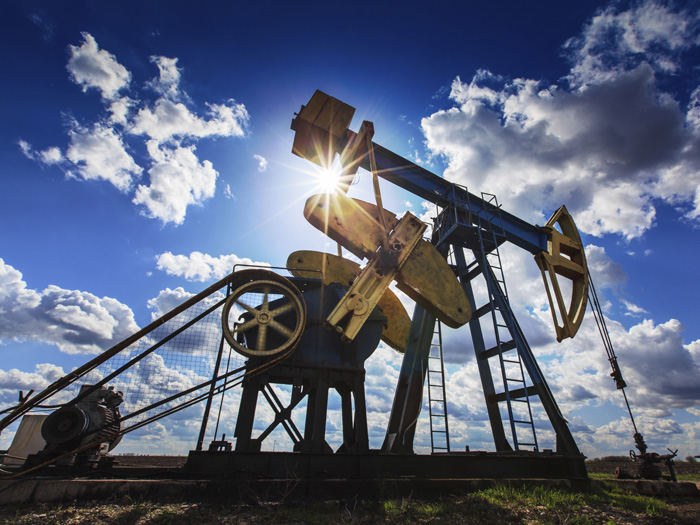7 Critical Risks Impacting the Energy Industry

From oil refineries to coal mines and nuclear power plants to wind farms, the energy industry plays a big role in how households, businesses and companies, governments, transportation and more function.
Because this is an industry spanning global markets, across international economies and different geopolitical environments, the energy sector isn’t immune to emerging risks. But that doesn’t mean it shouldn’t be ready to face these critical issues as they continue to emerge. The following threats to the energy industry are some of the more important risks to watch in the coming years.
1) Global Warming and Climate Change
Our atmosphere is ever-changing. But in recent years, human activity has had an accelerating impact on how rapidly the climate changes. One of the biggest contributors to the “greenhouse effect” causing global warming is fossil fuel emission — of which, 80 percent of the world’s energy comes from.
The energy sector has worked diligently to curb carbon emissions, and one report from the U.S. Energy Information Administration found that electric power consumption of fossil fuels is at its lowest level since 1994. The report says this is likely due to a shift toward natural gas versus fossil fuels.
“The declining trend in fossil fuel consumption by the power sector has been driven by a decrease in the use of coal and petroleum with a slightly offsetting increase in the use of natural gas,” the researchers wrote.
“Changes in the fuel mix and improvements in electricity generating technology have also led the power sector to produce electricity while consuming fewer fossil fuels.”
One of the biggest contributors to the “greenhouse effect” causing global warming is fossil fuel emission — of which, 80 percent of the world’s energy comes from.
However, despite a desire to burn more effectively, environmentalists are cracking down on the energy sector in the hopes to influence how energy is produced moving forward.
The San Francisco Board of Supervisors, for example, unanimously agreed to a resolution urging the insurance industry to stop insuring and investing in fossil fuels altogether.
The board is pushing the city to screen its potential insurers for investments in coal and tar sands. The board also is encouraging the city to cut ties with insurance companies that insure “dirty” energy projects.
And San Francisco isn’t alone. It’s joining a trend stemming from Europe, where 17 of its large insurers have already divested about $30 billion from coal companies. Other insurance companies have stopped or limited insuring coal altogether, and two insurers stopped insuring for new tar sands projects entirely. The energy sector needs to keep up with how customers wish to consume energy or face a decline in demand.
2) A Rapidly Changing Industry
Another risk the energy industry faces: rapid change.
“This industry has more change going on than most,” said Scott Smith, vice chairman, U.S. power & utilities leader, Deloitte LLP. “It’s a changing workforce,
changing capital investment, changing how energy is produced all the way through to how it is consumed.”
There’s changing regulatory models as well as some states undergoing deregulation as well as different rates changing, he added, and a push for decarbonization of generation.
Decarbonization, according to Green Tech Media, is “the reduction of greenhouse gas emissions from the electricity sector as a response to climate change. This includes the rapid expansion of variable renewable energy, coal-to-gas fuel switching, solutions for intermittency, and the evolution of power market design.”
“You have a risk of a lot of stranded investments the industry has to deal with,” said Smith. But, he added, “[this industry] is better at change than given credit for. It won’t look the same in 10 years.”
3) Cyber Threats
“What’s going on in the industry is massive capital expenditures. It’s spending a lot for instance on modernization of the grid,” Smith said. He added that there’s roughly $52 billion a year going toward grid modernization as the grid transforms from mechanical to digital.
And while this will bring positives to the energy industry as it enters the digital age, new risks abound. Particularly in cyber.
Energy’s a highly targeted industry, said Smith. He added that it may very well be one of the most targeted industry for cyber attacks, because it impacts a lot of individuals as well as large companies.
In fact, a U.S. Department of Homeland Security recently disclosed information that Russian hackers were behind a series of power outages last year, leaving facilities in a blackout while they accessed utility control rooms.
“In a digital world there exists more opportunity for more bad actors to get into systems. Customers use different ways to connect their home, using smart devices — smart TVs, thermostats, connected refrigerators — they all have a cyber element. People with bad intent have more devices, more entry-points, to get in,” said Smith. “The ability to do harm is increased.”
Dave Venable, VP of cyber security, Masergy, told Forbes he has seen numerous cases of both state and non-state actors targeting energy and other critical infrastructure.
“Many of these systems were designed so long ago that equipping them with modern security countermeasures can be difficult,” Venable said.
He added more needs to be done in regards to the electric grid and that “rapid detection and isolation of intrusions results in higher levels of resilience,” eliminating or minimizing any impacts.
4) Regulation and Public Policy
One risk that has been ongoing in the energy industry is regulation and public policy.
As Smith said, there is a changing nature surrounding power and how it’s generated. With change comes new laws to match. The U.S. Department of Energy has some of the broadest responsibilities in regulating power generation and electric transmission, distribution and retailing across the country. With numerous legal bodies overseeing nuclear, electric, gas, coal, oil, petroleum and more, the energy sector needs to be in-the-know of how its local, state and federal jurisdictions are changing to comply with the law.
5) Tariffs and Trade Tension
“My company,” wrote Dan Eberhart, CEO of Canary LLC, for Forbes, “saw an almost immediate 20 percent increase in the cost of steel when [President Trump’s] tariffs were announced” in April of this year.
Canary, he explained, is one of the nation’s largest, privately-owned oilfield services contractors, and it “spends roughly $10 million a year on imported steel to make wellhead and pressure control equipment, valves and other apparatus used by oil companies in the exploration and production process.”
The U.S. energy industry relies on global steel imports for a majority of its operations. Steel is needed for drilling, for production facilities both on- and offshore, for petrochemical plants, refineries and pipelines. With tariffs in place, the supply chain is impacted, costing energy facilities millions.
By hiking up the costs on supplies, companies will need to cut back somewhere else. And it’s employment that will suffer most.
“The economic consequences of a trade war are a real threat to our employees just as they were starting to see the benefits of the president’s other policies,” continued Eberhart. “Higher supply costs could force us to lay off as much as 17 percent of Canary’s staff of 300 employees.” With less employees, another big risk arises for the industry: a talent shortage.
6) Talent Retention and New Hires
According to a talent crisis survey, “Addressing the energy industry talent gap, where should you put your energy,” KPMG LLP, with contributions from Rigzone, found that nearly 50 percent of the energy workforce will reach retirement age in the next five to seven years.
The report went on to identify several key factors contributing to the talent gap in the energy sector, including inadequately skilled/trained workers, a lack in technical skills required for this continuously-innovating industry, competition over a limited talent pool and a shortage of petroleum engineers.
7) Catastrophic Events
“As an industry utilities are very good at dealing with these events, but we see that there’s, a) more events, and b) there’s more to them,” said Smith.
And he’s right. Looking back at the past year alone, the U.S. had three major hurricanes, unprecedented wildfires, huge mudslides, tornadoes, hail storms and flooding. 2017’s weather-related natural disasters cost the U.S. $306 billion. Hurricane Harvey, which flooded Houston with over 50 inches of rain, totaled $125 billion alone.
And CAT events aren’t just caused by malicious weather; any attack to a facility’s infrastructure — from terrorist-related activity to a mass physical-cyber event — can impact the facility and shut it down.
These events are “going to be seen with greater frequency and severity,” said Smith. “The dollars involved are so much greater.”
When a CAT event rolls through, the energy sector is tasked with getting back up and running. Smith said this has become easier as technology expands and more events occur; the energy industry is able to learn from past events and recover quickly.
“But it’s more than just getting services back after these events. It’s dealing with other aspects such as regulators, insurance companies, different constituents,” he said. &











